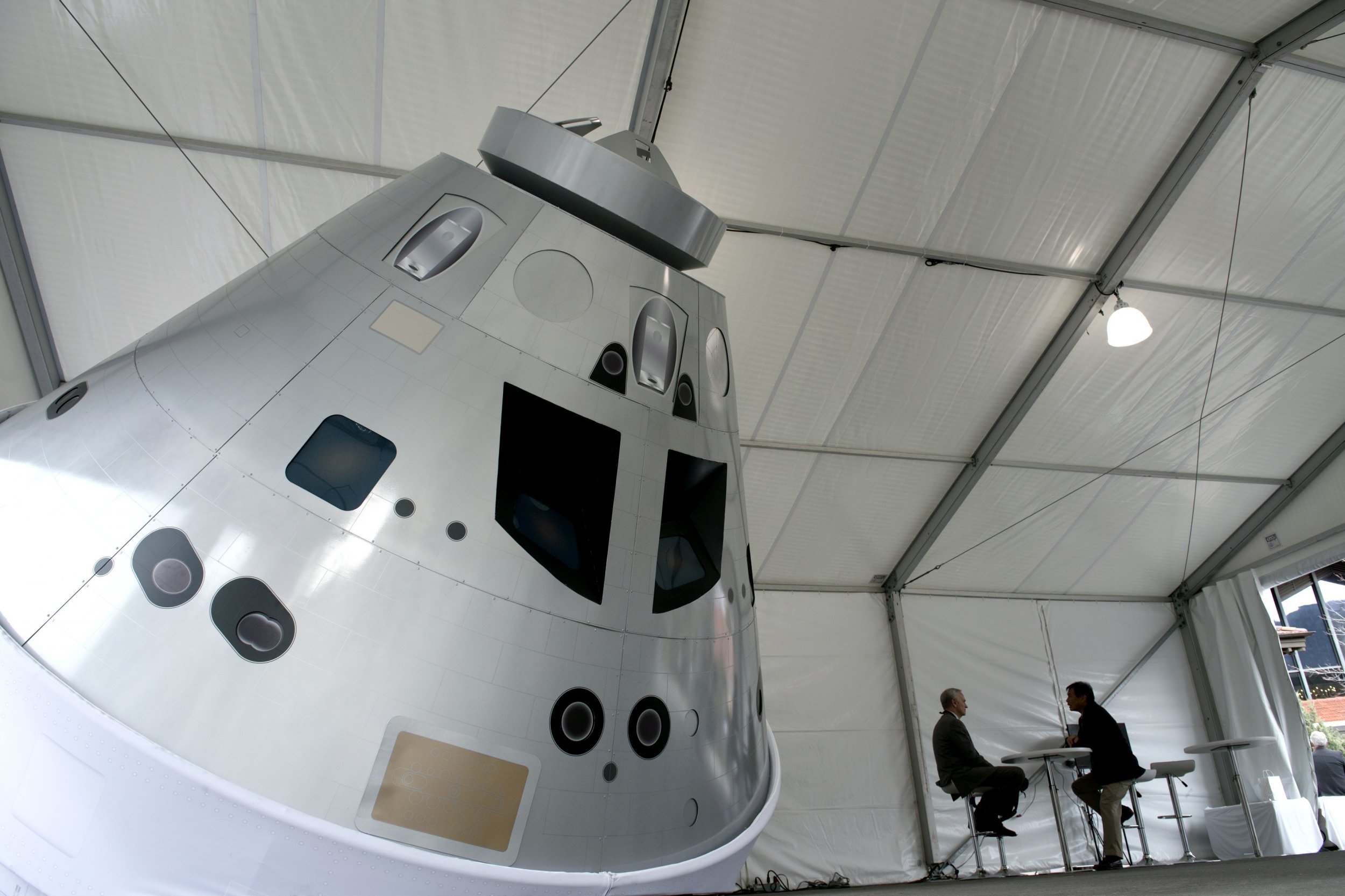
NASA's planned mission to the moon, which aims to put the first woman on the lunar surface by 2024, has been named Artemis, after the ancient Greek goddess who was the daughter of Zeus and Leto.
Artemis is the goddess of the moon as well as the twin sister of Apollo, whom NASA's pioneering moon missions in the 1960s and 1970s were named after. Some legends say that she was responsible for killing the giant huntsman Orion—whom Zeus immortalized in the stars as a constellation—for trying to rape her.
In a budget request published Monday, the space agency said that it needed an additional $1.6 billion for fiscal year 2020 to meet its accelerated deadline, which was moved back from 2028 by President Donald Trump in March this year.
Also on Monday, the president proposed that his administration would meet this requirement—in addition to the space agency's $21.5 billion annual funding allocation—with a new budget amendment, although this is not guaranteed because Congress still has to sign off on the money.
"Under my Administration, we are restoring @NASA to greatness and we are going back to the moon, then Mars. I am updating my budget to include an additional $1.6 billion so that we can return to space in a BIG WAY!" Trump tweeted Monday.
NASA administrator Jim Bridenstine welcomed the news, saying the amendment was an investment in the space agency's future.
"As you know, the president has given our agency the bold charge to land the next man and the first woman on the lunar South Pole by 2024," Bridenstine said in a video message to NASA staff. "And now President Trump has extended his vote of confidence in our work with an amended budget request for fiscal year 2020. It includes $1.6 billion in additional funding. This investment is a down payment on NASA's efforts and will allow us to move forward with design, development and exploration."
Bridenstine said that about $1 billion of the additional funding would enable NASA to begin the development of a commercial landing system, which will transport astronauts from lunar orbit to the surface and back. It will also help to focus the development of NASA's planned lunar orbit outpost, known as the Gateway, to support such a landing.
The Gateway is a small spaceship for astronauts and science experiments that will orbit the moon, acting as a kind of staging post. NASA hopes to launch the Gateway's power and propulsion elements by December 2022.
According to the budget amendment, another $650 million of the additional funding would help NASA to develop the next-generation Space Launch System (SLS)—the most powerful rocket in the world—and Orion, the agency's new spacecraft, which will ultimately take astronauts to the Gateway.
It also includes $132 million and $90 million, respectively, for key exploration technologies such as solar electric propulsion and devices that convert polar ice to water, as well as increased robotic exploration of the moon's polar regions.
"While there are many steps ahead in the budget and appropriations process, all of us at NASA should be very proud and excited by this unique opportunity," Bridenstine said in his video message.
"We envision strong commercial partnerships that will increase innovation and reduce costs to the American taxpayer. I challenge you, the NASA family, to share with your family and friends how, for 60 years, investment in our agency has improved the human condition through science, exploration and innovation," he said. "Exploring the moon is the next step in our agency's story, and it will be to the benefit of all of us. We are in a moment of opportunity, together."
NASA sees the 2024 Artemis mission as the first step toward the establishment of sustainable lunar surface missions by the late 2020s, as well as human exploration of Mars in the 2030s.
However, there are several significant challenges to overcome before the Artemis program, which is still in the early stages of development, will be ready put people on the moon. Some experts are concerned that NASA will not be able to meet the 2024 deadline, Agence France-Presse reported.
For one, the development of the multibillion-dollar SLS has been beset by delays, and the rocket system has not yet completed a test flight. NASA is aiming for 2020 for an uncrewed test flight and 2022 with astronauts on board the Orion spacecraft, which is named after the giant huntsman.
Furthermore, the space agency needs to develop a new lunar lander, which can be accomplished only if Congress approves the additional funding request.
Uncommon Knowledge
Newsweek is committed to challenging conventional wisdom and finding connections in the search for common ground.
Newsweek is committed to challenging conventional wisdom and finding connections in the search for common ground.
About the writer
Aristos is a Newsweek science reporter with the London, U.K., bureau. He reports on science and health topics, including; animal, ... Read more
To read how Newsweek uses AI as a newsroom tool, Click here.








